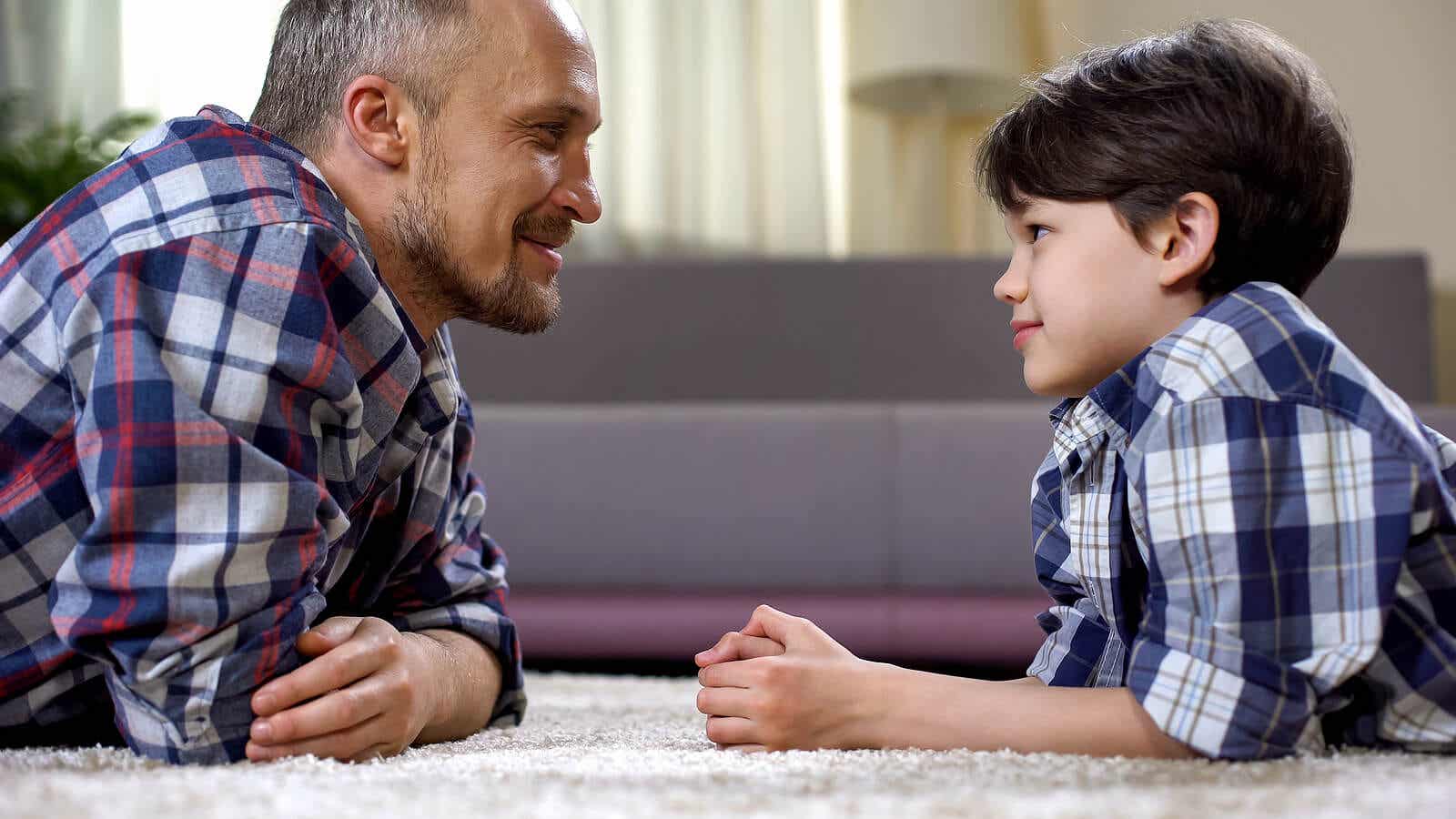6 Types of Discipline You Can Apply with Your Child


Written and verified by the psychologist Maria Fátima Seppi Vinuales
What’s the first thing that comes to mind when you think of discipline with children? Perhaps you imagine that discipline is synonymous with punishment or authoritarianism. Or that discipline and affection aren’t compatible. But did you know that there are several types of discipline?
That’s right. Discipline is about learning, perseverance, and education. With limits established through affection and responsibility, without resorting to violence. From this approach, you can find strategies to work on discipline with your children.
Knowing more about discipline
There are different ways in which you can interact with your children. On one extreme, there’s an authoritarian discipline, which disregards any desire or emotion in the child, who must only obey their parents. Here, children have no room to explore and act, as it’s only a matter of following orders.
On the other hand, there’s permissive discipline, in which children are allowed to rule and parents say yes to everything without even thinking if the children have the maturity or the capacity to execute such a plan.
Undoubtedly, being authoritarian or permissive also shapes a type of behavior in children in the present and in the future. These responses can be anxiety, fear, insecurity when making decisions, or complacency, among others.
Perhaps even these previous ideas of discipline are wrong and, because of this bad press, some trends today prefer to emphasize a certain additional component. For example, positive parenting or discipline.
According to Payne and Siegel (2015), discipline–far from punishment– is the greatest show of affection and interest that parents can have with their children. It’s about educating with limits, maintaining an emotional connection with children, and helping them on their path of growth.
The goal is for them to be able to develop their autonomy and make good decisions. Not in order to avoid punishment, but because they understand what’s best for them and their relationships.

What are the types of discipline that exist?
Some of the types of discipline that you can take into account to educate your child so that they become a person of integrity who makes good decisions are the following.
1. Finding the emotional zone of calm
When children are angry and in a “tantrum” situation, what’s really happening is that they don’t yet have the tools to be able to resolve their conflict in another way. In this regard, as an adult, you must help them by being a mediator and interpreter of their emotions.
Therefore, rather than getting angry and yelling, you can invite him to a corner of their room where they have some of their favorite toys or where they can find some calm.
You can even keep them company and guide them until they find harmony, singing to them, telling them to breathe, etc. For this technique to work, it’s important to explain it to them beforehand, so you help them understand their anger.
2. Valuing the process, not just the result
Recognizing achievements is one of the main emotional needs of children. Therefore, congratulate them every time they get better at something. And when they don’t achieve the expected result, you should still validate their effort and intention.
For example, you can tell a child who’s been practicing balancing on their bike for several days, “Great! You tried so hard and today you did it!”
3. Establishing rules and limits
If you expect your child to behave in a certain way, you must communicate the rules and the consequences of not following them. It’s best to build them together and explain what they’re for. The idea is that children can understand their importance and avoid thinking that they’re a whim or an imposition.
For example, you can reach an agreement with them and say “You know that once you finish tidying up your room, you can go out and play.“
4. Phrasing your instructions in a positive way
If you want your child to act, you must lead the way. For example, instead of saying, “Don’t leave your toys lying around,” say, “Put your toys back where they belong.”
5. Anticipating scenarios
If your child has several tasks ahead of them during the day, you can talk to them so that they have them in mind. This way, it won’t be a surprise and it’ll be easier for them to prepare and manage their emotions.
6. Talking about their emotions
Whenever your child feels angry, frustrated, or tired, you may encounter a refusal to comply with a certain order, such as when they have to do their homework. In that case, it’s a good idea to empathize with them and come up with a solution.
Try telling him “I know you’re tired and would rather go play than do chores. It happens to me, too. Sometimes that I wish I could stay home instead of going out to work. However, it’s important to do this so that you don’t fall behind and so you can go do what you want as soon as possible.”

What are the best types of discipline for your child?
Without a doubt, you should always resort to types of discipline that are based on respect, validation of emotions, and patience, and not those where yelling and violence are commonplace.
No one doubts that you’re a human being who also has other issues that concern you, and that sometimes you “react”. But it’s important to learn to be aware of your own limits and “triggers” so that you can learn to put the brakes on sooner.
Discipline is also care
Perhaps it’s already clear that discipline is a sign of interest and responsibility. It’s worth noting that in order to apply positive discipline, it’s important to do so in a calm manner. This, in the times we live in, often seems impossible.
However, it requires a first step of self-care, so try to ask for help if you feel overwhelmed, look for your own leisure time, and try to rest. This way, every time you act with your children, you won’t do it from a place of accumulated stress.
Of course, there are days that are better than others and those that are more difficult. Positive parenting requires time and patience. It’s a trial and error that you’ll correct as you become aware of the path you want to follow and as you accept to learn those things you want to change.
All cited sources were thoroughly reviewed by our team to ensure their quality, reliability, currency, and validity. The bibliography of this article was considered reliable and of academic or scientific accuracy.
- Bilbao, A. (2015). El cerebro del niño explicado a los padres. Barcelona: Plataforma.
- Capano, Álvaro, & Ubach, Andrea. (2013). Estilos parentales, parentalidad positiva y formación de padres.. Ciencias Psicológicas, 7(1), 83-95. Recuperado en 21 de mayo de 2023, de http://www.scielo.edu.uy/scielo.php?script=sci_arttext&pid=S1688-42212013000100008&lng=es&tlng=es.
- Nerín, N. F., Nieto, M. Á. P., & de Dios Pérez, M. J. (2014). Relación entre los estilos de crianza parental y el desarrollo de ansiedad y conductas disruptivas en niños de 3 a 6 años. Revista de Psicología Clínica con niños y adolescentes, 1(2), 149-156.
- Siegel, D y Payne, T. (2015). Disciplina sin lágrimas: una guía imprescindible para orientar y alimentar el desarrollo mental de tu hijo. Madrid, España
- Siegel, D y Payne, T. (2010). El cerebro del niño: 12 estrategias revolucionarias para cultivar la mente en desarrollo de tu hijo. Madrid, España.
This text is provided for informational purposes only and does not replace consultation with a professional. If in doubt, consult your specialist.
